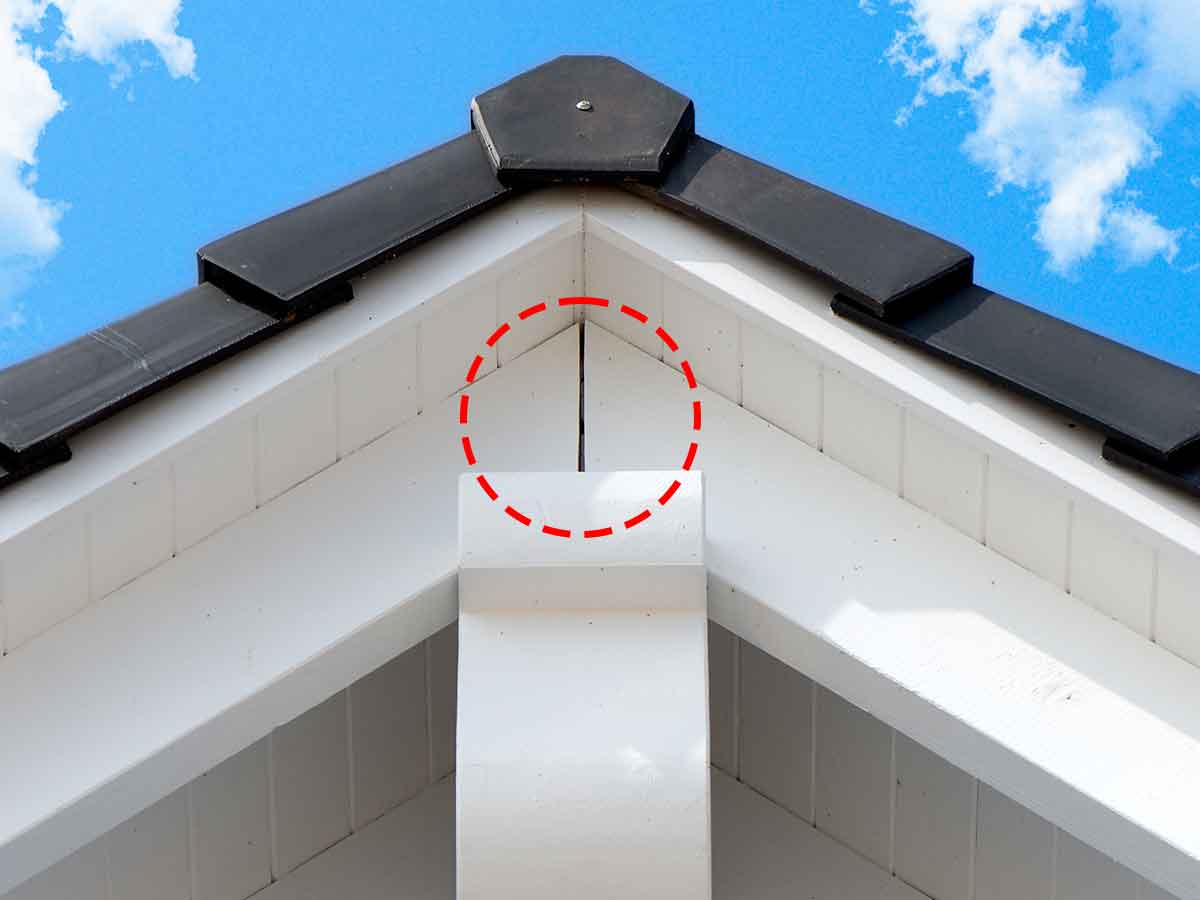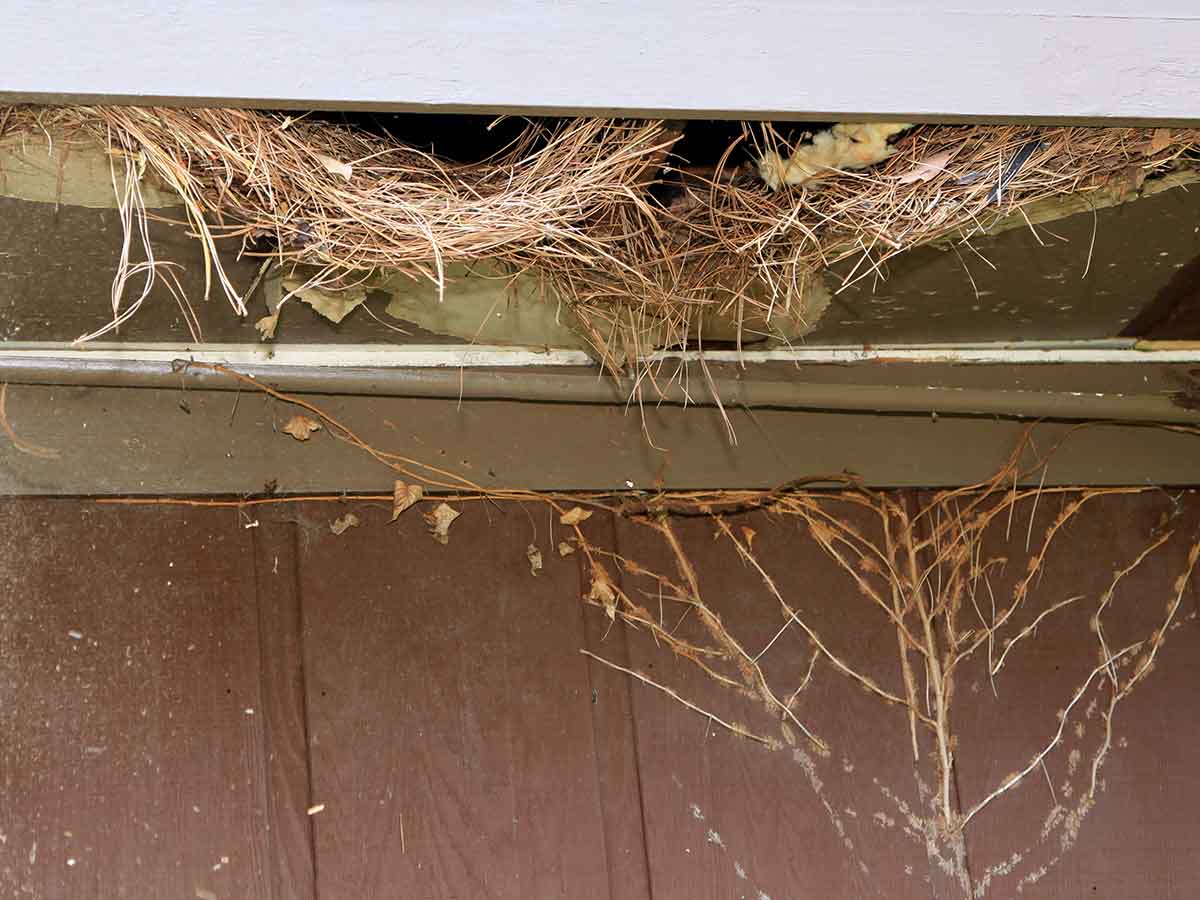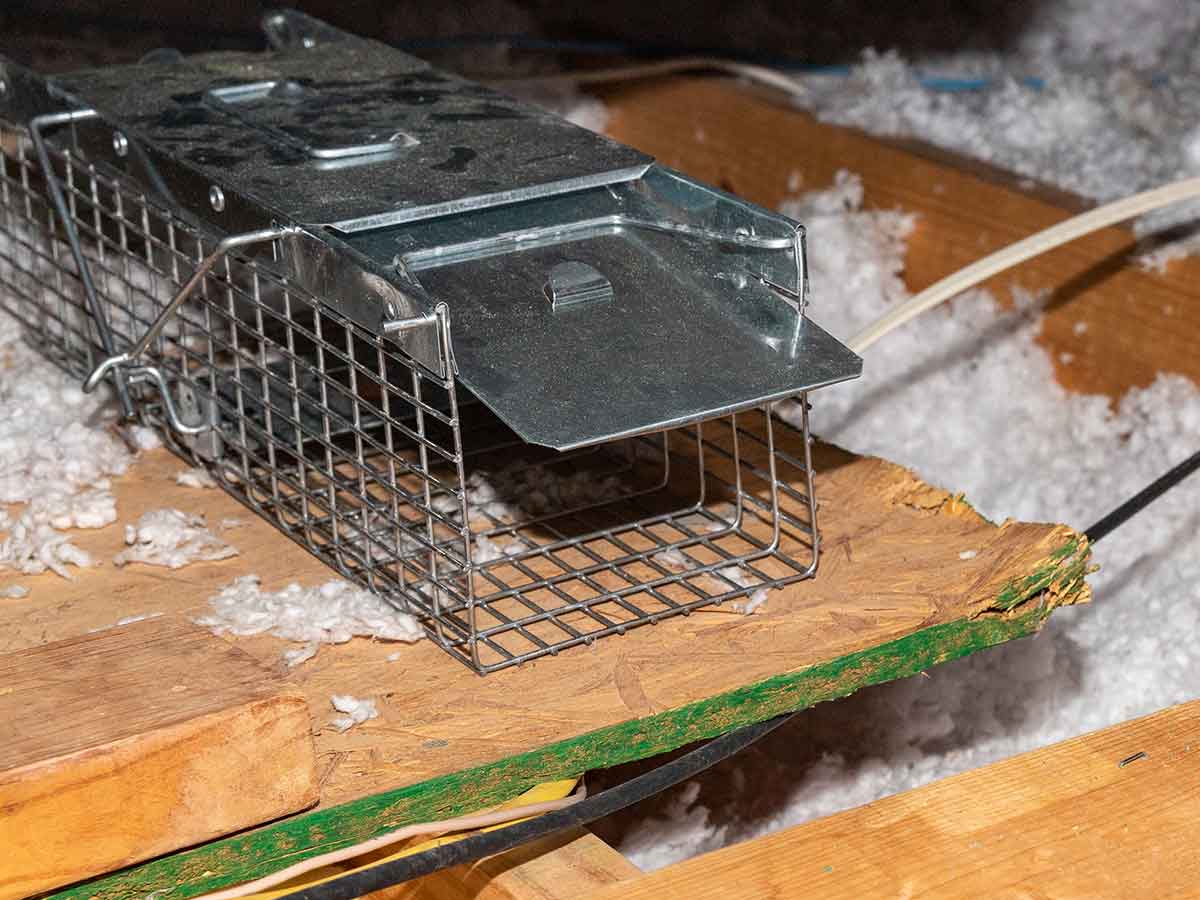Squirrels getting into a home's attic is quite common. On top of keeping us up at night with the scurrying and scratching, they can do considerable damage to your home's attic.
Why do squirrels want to get into the attic?
Squirrels are attracted to dry, friendly shelters where they can nest. They can store food and have their babies in a warm and safe environment.
When it's cold out, they tend to be more aggressive about getting into a home's attic. They're very much like us wanting to get out of the cold into a warm and cozy place.
How do squirrels get into the attic?
There are numerous ways a squirrel can get into your attic. One of the most common ways is through roof soffit intersections (roof intersects).
Roof Soffit Intersections (Roof Intersects)
Squirrels very commonly exploit roof intersects to get into a home's attic. Over time, roof intersects tend to widen (see photo above). A squirrel's powerful chewing ability can make a roof intersect wider - allowing easy access in and out of your attic.
Gable and Wall Vents
Gable and wall vents are meant to circulate air. During the winter, warm air is expelled. That warm air can attract squirrels to a safer, warmer shelter.
Some gable and wall vents are made of plastic and can be chewed through by a squirrel. They can also loosen over time and provide gaps for squirrels to fit through.
Roof Vents
Squirrels like a warm and safe place to nest. The warm air coming from an attic's roof vent is very inviting.
Roof Edge
Roof edges tend to take the most damage over the years. A squirrel can take advantage of weakness or dry rot and chew through the edge to make gaps easier to fit through.
Chimneys
A chimney that is uncapped can be an easy entry point for a squirrel. Since squirrels are excellent climbers, chimneys lined with brick make it easier for a squirrel to come and go as they please.
Plumbing
Plumbing mats on the roof can also provide access to a squirrel. During a home's construction, builders tend to cut holes bigger than what they need. The hole is then patched - typically with a matting made of rubber. This matting can be chewed through by a determined squirrel.
Squirrels keeping you up?
Our pest control experts will make sure your home is squirrel-free.
How do I keep squirrels from getting in my attic?
To keep squirrels from getting into your attic, you want to evaluate possible entry or weak points in your roof and perform a rodent exclusion.
1. Evaluate Your Roof For Possible Weak/Entry Points A Squirrel May Exploit
This means looking at every possible entry point a squirrel may exploit:
-
- Roof/Soffit Intersections (roof intersects)
- Roof vents
- Gable vents
- Roof edges
- Wall vents
- Chimneys
- Plumbing
A helpful tip we use is to look at all of these from inside the attic. The sunlight penetrating gaps can help you see any possible roof exposure.
2. Perform A Rodent Exclusion
Performing a rodent exclusion is tedious work for the do-it-yourselfer. You'll want to use industrial-grade hardware cloth to seal up all possible entry points from inside the attic.
Please take proper precautions when doing this as attics can become very hot in the summer.
Please be cautious while performing a rodent exclusion. A misstep can punch a hole through your ceiling; or worse, you can fall through it and hurt yourself. During the summer, attics can get very hot. A best practice is to do a rodent exclusion during the early morning when the attic is still cool.
Worried about squirrels in your attic?
Our pest control experts will make sure your home is squirrel-free.
How do I get rid of squirrels in the attic?
There are two primary ways to get rid of squirrels in your attic. You can set traps yourself or call a pest control expert that has extensive rodent experience.
Set Squirrel Traps
Setting your own traps is the least costly; however, without proper training and experience, catching a squirrel can be challenging.
To catch a squirrel, follow these steps:
- Select a squirrel trap
- Bait the trap
- Determine where to place the trap
- Set the squirrel trap
- Check your squirrel trap often
- Remove squirrels from traps by opening them far away from your home, or outside if you've done a squirrel exclusion.
Get Rid Of Previous Squirrel Odors
Lingering squirrel odors can attract new squirrels. Clean your attic using an antimicrobial fogging treatment.
However, if you have thoroughly sealed off your attic, this may not be required.
Call A Squirrel Removal Expert
Catching squirrels is a combination of science and experience. A seasoned pest control expert will be able to catch squirrels in a reasonable amount of time.
Many pest control experts that work with squirrels and other rodents will do a free squirrel inspection like us.
Are squirrels in your attic?
Our pest control experts will make sure your home is squirrel-free.
Get A Free Pest Control Quote
Are squirrels damaging your attic?
Our pest control experts will make sure your home is squirrel-free.



